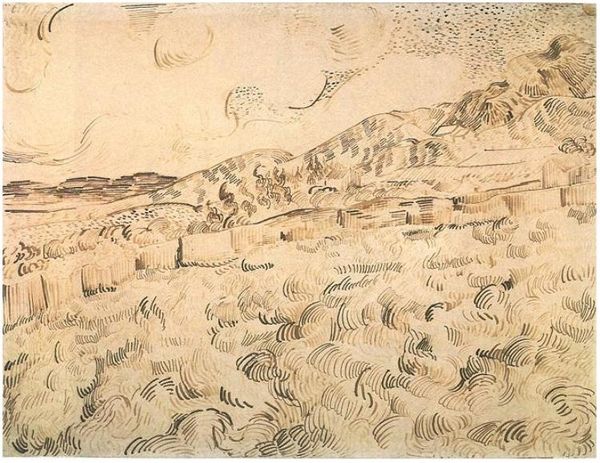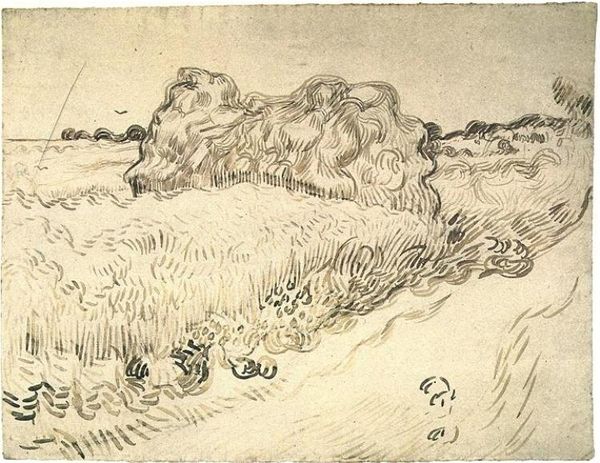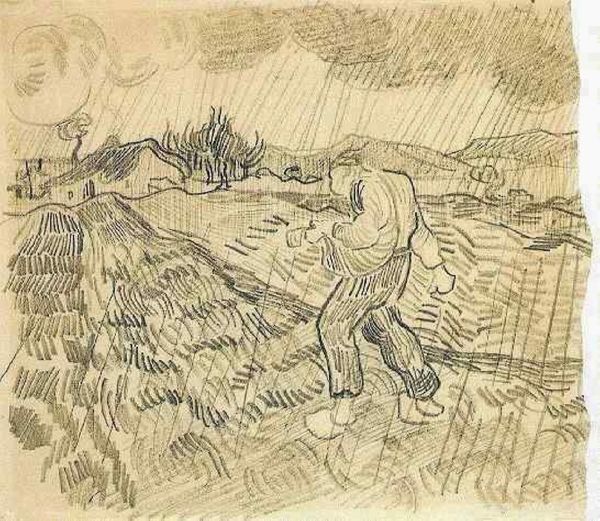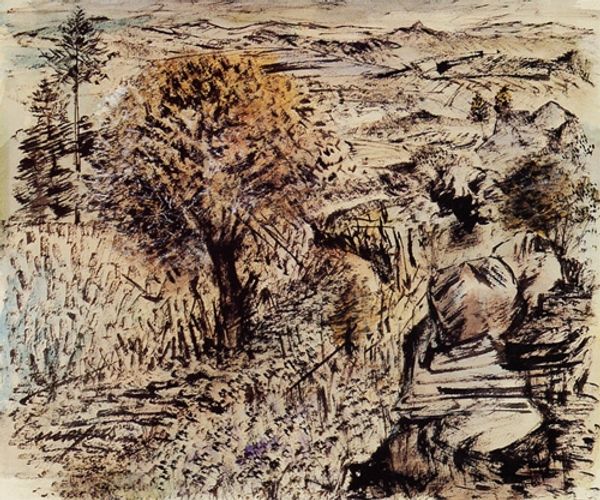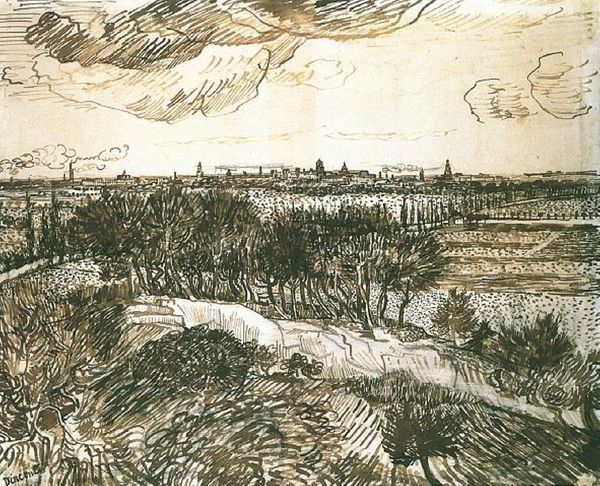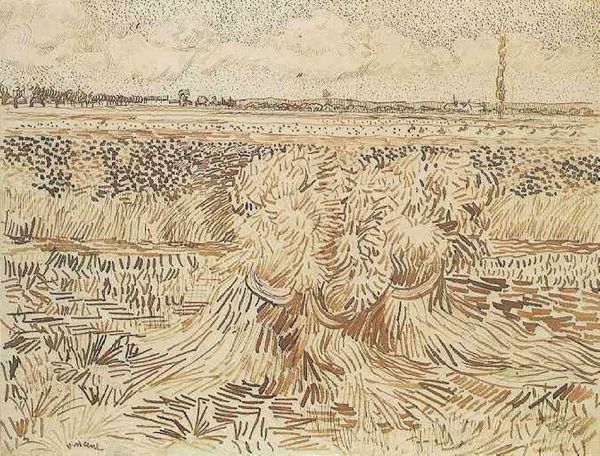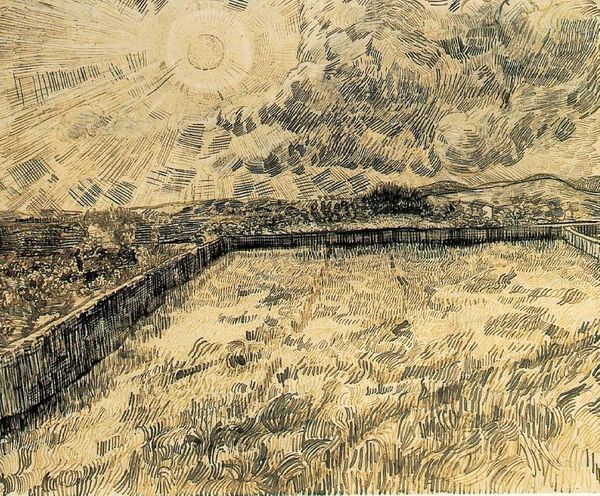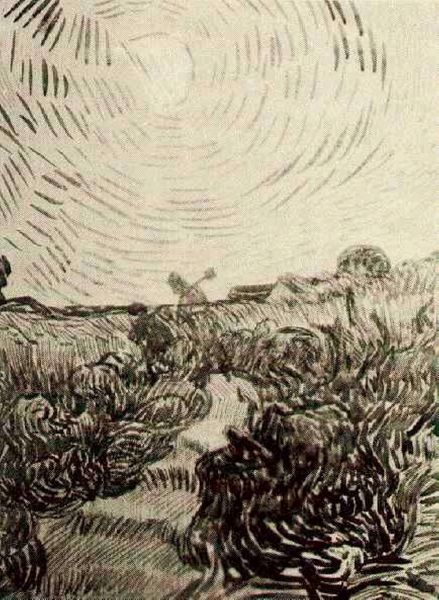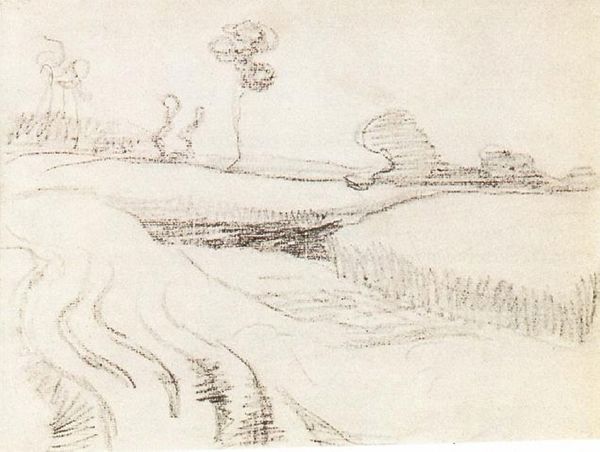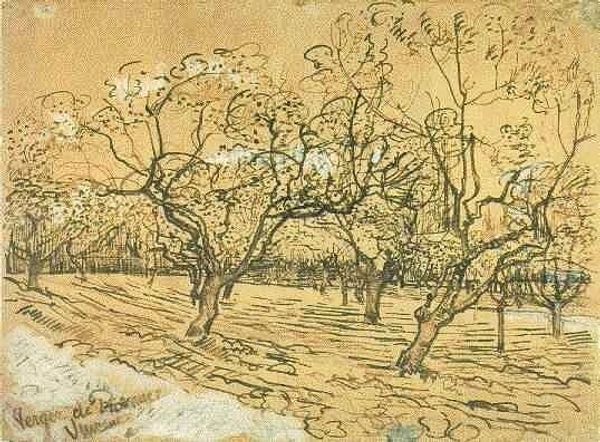
drawing, charcoal
#
drawing
#
landscape
#
charcoal drawing
#
line
#
charcoal
#
post-impressionism
Copyright: Public domain
Editor: Here we have Vincent van Gogh's "Enclosed Wheat Field with Reaper," created in 1889, rendered in charcoal. There's a quietness to the landscape despite the feverish lines, a certain solitude hanging in the air. What catches your eye in this piece? Curator: Oh, it's more than just solitude, I think! For me, it’s that swirling energy, that obsessive mark-making… Do you see how the field practically writhes beneath the sky? There’s this sense of the artist almost wrestling with the landscape. He is translating an internal state using line, a potent visual language for him during moments of instability. Is that field dancing or is it screaming, I wonder? What do you see when you gaze at the "sun?" Editor: It looks almost… hesitant? Like it's barely there, a ghost of a sun. Maybe that's why I feel the solitude so strongly, like even the sun is fading away. It definitely changes my perspective thinking of the wheat as writhing though, I’d considered it more of a stillness before. Curator: Maybe we are both correct, and stillness is its own form of screaming here! Consider how van Gogh’s reality twisted and contorted itself. That's reflected, so viscerally, in these churning marks. This landscape, while beautiful, holds echoes of turmoil. Almost a prophecy to a tempestuous spirit. The lines carry more than just aesthetic information; they become conduits for feeling, for a soul laid bare on paper. Isn't it remarkable how much emotional weight charcoal can bear? Editor: That’s an incredible point, really shifting how I perceive the medium. Thank you. It seems I only scratched the surface before. Curator: Indeed. The surface is often a veil! The deeper we delve, the more profoundly these whispers speak to us!
Comments
No comments
Be the first to comment and join the conversation on the ultimate creative platform.
